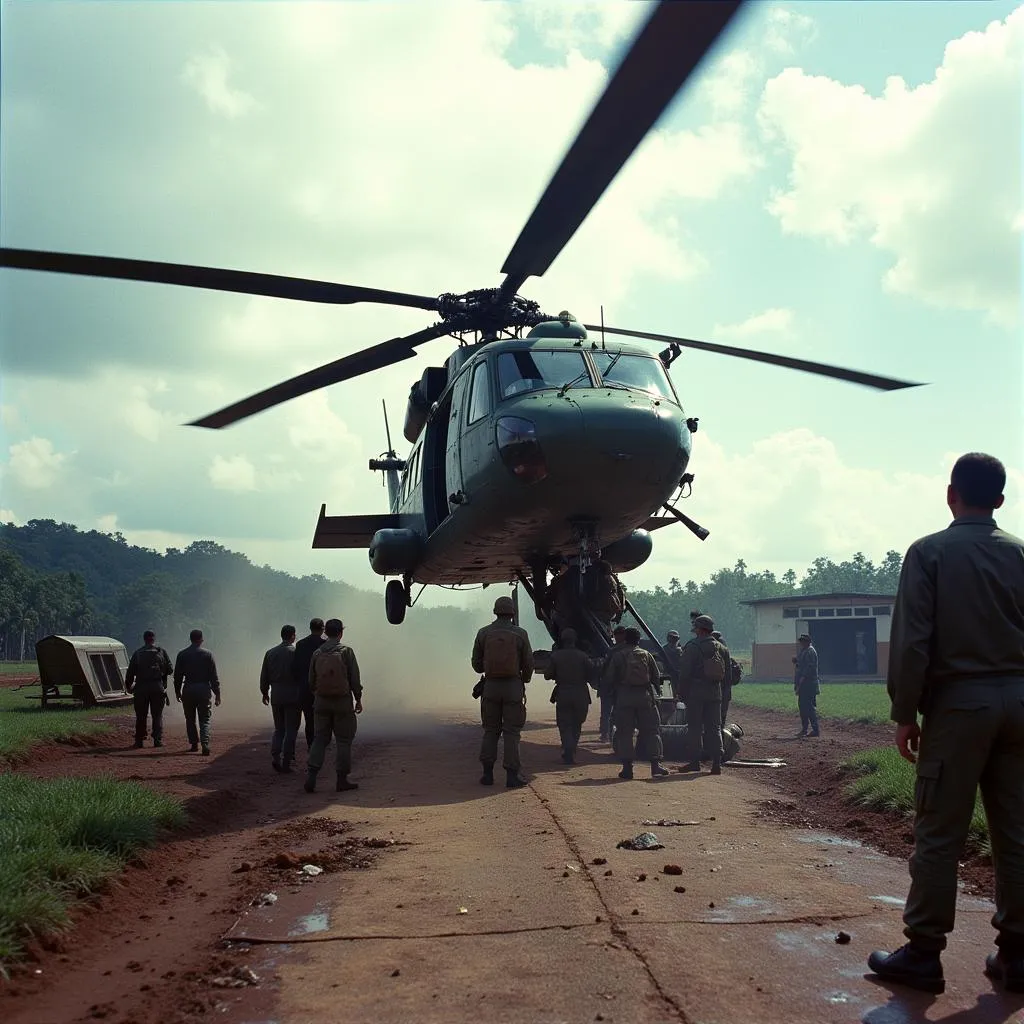The Vietnam War, a period of significant historical impact, saw the establishment of numerous medical facilities to treat the wounded and sick. These “Vietnam War Hospitals,” as they became known, played a critical role in providing essential medical care amidst the chaos and devastation of the conflict. While the term often evokes images of makeshift field hospitals, the reality encompassed a diverse range of facilities, each with its own story to tell.
The Crucial Role of Vietnam War Hospitals
The sheer scale of the Vietnam War necessitated an extensive network of medical facilities. These ranged from small aid stations on the front lines to large, well-equipped hospitals located further from the fighting. These hospitals served as lifelines for countless soldiers and civilians caught in the crossfire, providing vital medical care and a glimmer of hope in the face of adversity.
 Vietnam War hospital doctors and nurses caring for patients
Vietnam War hospital doctors and nurses caring for patients
Types of Vietnam War Hospitals
The Vietnam War saw the establishment of different types of hospitals, each catering to specific needs:
- Mobile Army Surgical Hospitals (MASH): These mobile units, made famous by the television show, provided surgical care close to the front lines, offering immediate treatment for wounded soldiers.
- Evacuation Hospitals: Located further back from the front lines, these hospitals provided more comprehensive care and served as hubs for stabilizing wounded soldiers before transferring them to larger facilities.
- Station Hospitals: Located in major cities or military bases, these permanent hospitals offered the highest level of care and often served as centers for specialized treatment.
 Vietnam War hospital evacuation helicopter
Vietnam War hospital evacuation helicopter
Challenges and Innovations
Operating a hospital during the Vietnam War came with a unique set of challenges:
- Limited Resources: Medical personnel often had to make do with limited supplies and equipment, forcing them to improvise and develop innovative solutions.
- Harsh Conditions: The tropical climate, coupled with the constant threat of enemy fire, created a challenging and stressful environment for medical staff.
- High Patient Volume: The sheer number of casualties, both military and civilian, put a tremendous strain on the capacity of these hospitals.
Despite these challenges, medical professionals in Vietnam War hospitals demonstrated incredible resilience and resourcefulness. They developed new medical techniques, such as the widespread use of helicopters for medical evacuations, which have since become standard practice in modern warfare.
Legacy of Vietnam War Hospitals
The legacy of Vietnam War hospitals extends far beyond the conflict itself. The experiences and innovations born out of necessity during this era significantly advanced the field of medicine, particularly in areas like trauma care and emergency medicine.
 Modern medical facility inspired by Vietnam War innovations
Modern medical facility inspired by Vietnam War innovations
Conclusion
While often remembered as places of suffering and loss, Vietnam War hospitals stand as testaments to the resilience of the human spirit and the unwavering dedication of medical personnel in the face of adversity. Their legacy continues to shape modern medicine, reminding us of the profound impact of conflict on medical advancements and the enduring importance of providing compassionate care in times of crisis.